Smartphones have become an inseparable part of modern life, revolutionizing communication, work, and entertainment. However, excessive smartphone use (ESU) has been linked to various negative consequences, including addiction-like behaviors, impaired mental health, and diminished attention spans. Recent studies suggest that smartphone-related cues can trigger neural responses similar to those seen in substance addiction, reinforcing compulsive usage patterns. Understanding the effects of smartphone restriction on cue-related neural activity can provide valuable insights into developing interventions for individuals struggling with ESU.
The Role of Cue Reactivity in Smartphone Use

Cue reactivity (CR) refers to the brain’s response to stimuli associated with a habitual or addictive behavior. In the case of smartphone use, cues may include notification sounds, phone screens lighting up, or simply seeing a smartphone in one’s environment. These cues can activate reward-related brain regions, reinforcing the compulsive urge to check the device.
Research has shown that individuals with excessive smartphone use exhibit heightened neural responses to smartphone-related cues, similar to those observed in substance addiction. This heightened sensitivity may contribute to difficulty in controlling smartphone usage, leading to a cycle of compulsive checking and craving.
Investigating Neural Activity Changes Through Smartphone Restriction
To better understand how short-term smartphone restriction influences brain activity, researchers conducted a study using functional MRI (fMRI) to measure changes in cue-related neural responses over 72 hours of smartphone abstinence. The study involved 25 young adults who were regular smartphone users.
Video : What Happens To Your Brain When You Mindlessly Scroll?
Study Design and Methods
- Participants were instructed to refrain from using their smartphones for 72 hours.
- A cue-reactivity task was designed, where participants were exposed to images of smartphones (both active and inactive) as well as neutral objects.
- Functional MRI scans were conducted before and after the restriction period to analyze changes in brain activity.
- Psychometric assessments were used to measure craving, self-control, and emotional responses associated with smartphone use.
Key Findings: How the Brain Adapts to Smartphone Restriction
1. Reduced Activation in the Reward System
One of the most striking findings was a significant reduction in activity in the nucleus accumbens and anterior cingulate cortex after 72 hours of smartphone restriction. These brain regions are heavily involved in reward processing and habit formation.
- The nucleus accumbens is associated with motivation and reinforcement learning. High activation in this area suggests strong craving and compulsive behavior.
- The anterior cingulate cortex plays a role in decision-making and impulse control. Reduced activity here indicates that participants may have experienced less compulsion to check their smartphones.
These findings suggest that even a short break from smartphone use can lead to neuroplasticity, allowing the brain to become less reactive to smartphone-related cues.
2. Alterations in Dopamine and Serotonin-Linked Activity
Further analysis using neurotransmitter probability maps revealed that activity changes in the reward system were closely linked to dopamine and serotonin receptor probabilities.
- Dopamine is a key neurotransmitter in reward-seeking behavior and addiction.
- Serotonin is involved in mood regulation and impulse control.
The findings suggest that smartphone restriction may influence neurochemical processes that drive compulsive behaviors. This could explain why some people feel withdrawal-like symptoms, including restlessness and anxiety, when they suddenly stop using their phones.
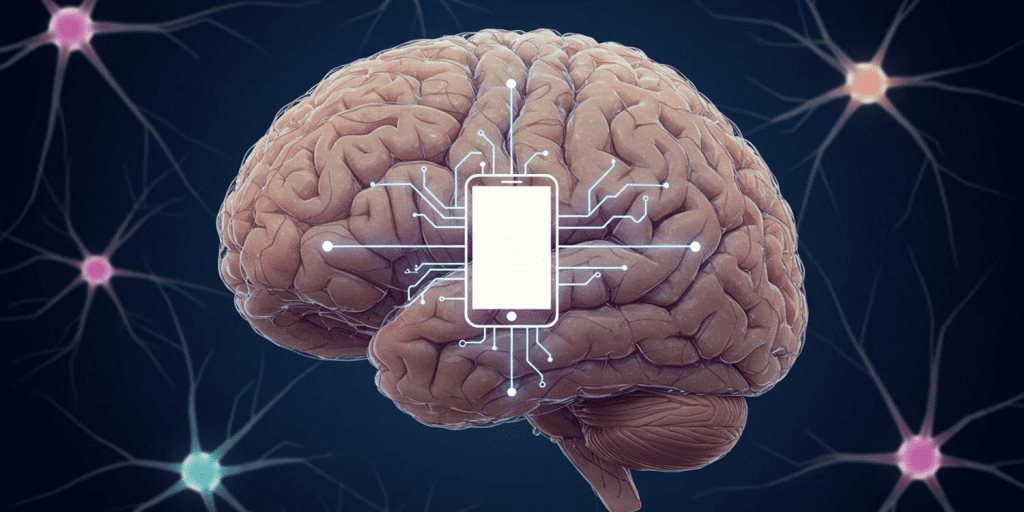
3. Increased Engagement of the Parietal Cortex
Another notable result was the increased activity in the parietal cortex, a region associated with attentional control and sensory processing.
- This suggests that participants became more aware of their environment and less preoccupied with smartphone-related distractions.
- Heightened parietal cortex activity was correlated with reduced craving scores, indicating improved cognitive control over impulsive smartphone use.
This supports the idea that limiting smartphone use can enhance focus and attentional regulation, reducing dependency on digital devices.
4. Reduced Compulsive Checking Behavior
Behavioral assessments showed that participants experienced a significant decrease in the urge to check their smartphones over time. This aligns with the observed neural changes in reward sensitivity and impulse control.
Participants also reported improvements in:
- Sleep quality: Reduced exposure to blue light and nighttime scrolling led to better sleep patterns.
- Social interactions: Without constant phone distractions, participants engaged more with people around them.
- Mental well-being: Several individuals noted feeling less anxious and more present in their daily activities.
Implications for Smartphone Addiction and Digital Detox Strategies
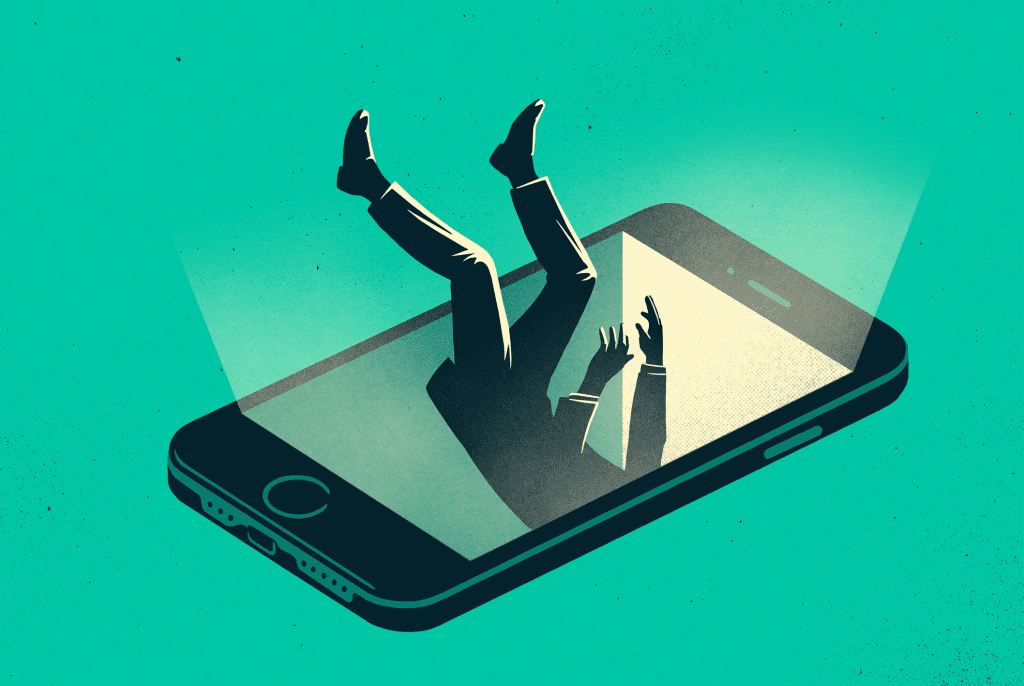
The findings of this study have significant implications for individuals struggling with excessive smartphone use. While a complete break from smartphones may not be feasible for everyone, implementing digital detox strategies can help manage usage and mitigate negative effects.
1. Scheduled Smartphone Breaks
- Taking regular breaks from smartphone use, even for a few hours a day, can help reset neural responses to digital cues.
- Setting specific times for checking messages rather than responding to every notification can reduce compulsive checking.
2. Mindful Technology Use
- Practicing conscious smartphone use by turning off unnecessary notifications and using grayscale mode can help decrease reliance on digital stimuli.
- Engaging in non-digital hobbies, such as reading, exercise, or meditation, can strengthen attention control and reduce smartphone dependency.
3. Sleep Hygiene and Nighttime Restrictions
- Avoiding smartphone use one hour before bed can improve sleep quality by preventing blue light exposure.
- Using do not disturb or airplane mode at night can minimize the temptation to check notifications.
4. Awareness Campaigns and Education
- Schools, workplaces, and mental health professionals can promote awareness of the impact of excessive smartphone use on brain function.
- Implementing digital wellness programs can encourage balanced technology use.
Video : Cell Phones Affect Brain Activity
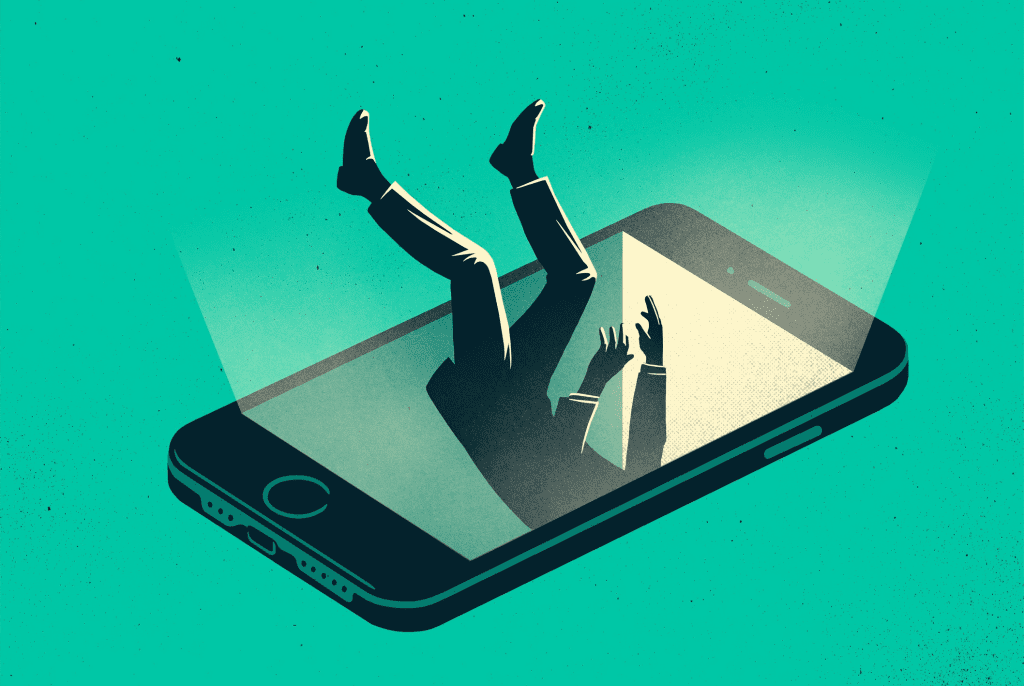
Conclusion: How Smartphone Restriction Reshapes the Brain
The study provides compelling evidence that even a short period of smartphone restriction can lead to measurable changes in brain activity. The observed reductions in reward-related neural responses, coupled with increased attentional control, suggest that limiting smartphone use can promote cognitive flexibility, impulse control, and overall mental well-being.
As smartphone addiction continues to be a growing concern, understanding the neurological basis of cue-reactivity and digital dependency is crucial. These findings highlight the importance of incorporating healthy technology habits to ensure that smartphones remain tools for convenience rather than sources of compulsive behavior.
By making small adjustments in smartphone usage, individuals can foster better focus, improved mental clarity, and greater overall life satisfaction. So, why not start with a 72-hour break and see how your brain adapts?
Boy didn’t stop kicking our seat during a very long Flight – Here’s what my dad did

Hi everyone, I’m Evelyn from Minnesota, and I have a story that will make you think twice before boarding a plane again. My dad and I were traveling from Alberta to Minneapolis. What started as a cozy and comfortable flight soon turned into a nightmare, all thanks to a little boy and his oblivious parents.

The Kicking Begins
About 40 minutes into our flight, a boy, probably around ten years old, started kicking my seat. At first, I thought it was a joke. I turned around and politely asked, “Hey buddy, can you please stop? I really want to enjoy my flight.” His parents shot me a weird look while the kid made a face, but I thought he got the memo.
Five minutes later, the kicking resumed, more relentless than before. This time, he was hitting both my seat and my dad’s. My dad, always the calm and composed man, politely asked the boy to stop as well. And he did… for about ten seconds. Then, it started again. Bam. Bam. Bam.
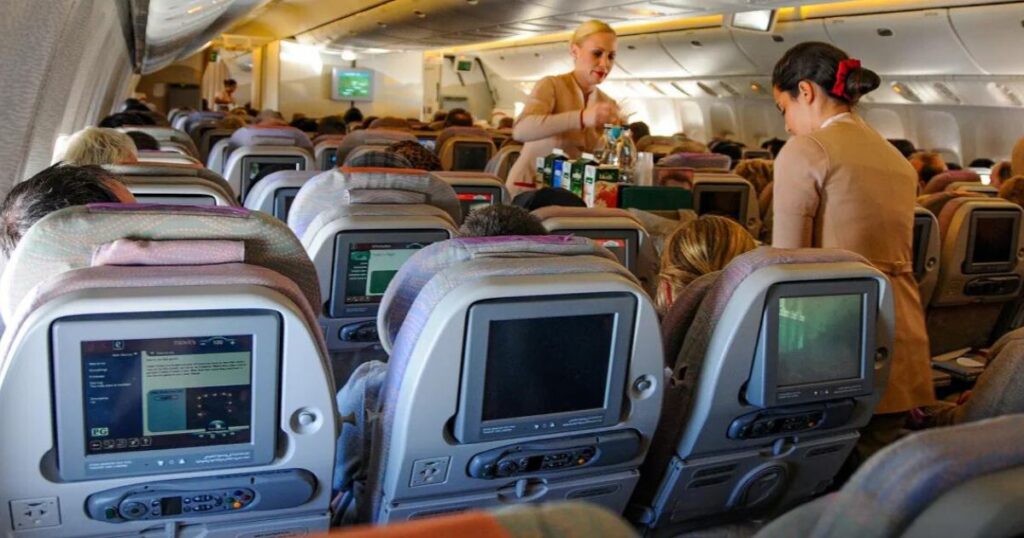
The Audacity of the Parents
My dad decided not to call the flight attendant. Instead, he reclined his seat as far as it could go. The boy, unable to kick anymore, started whining to his parents. The parents, instead of controlling their son, asked my dad to put his seat back up. “Our son should enjoy his flight too,” they insisted.
My dad politely refused. The audacity of these parents was beyond belief. They had the nerve to call the flight attendant on us. This is where things took an interesting turn.

The Flight Attendant’s Intervention
The boy’s father complained to the flight attendant, “This man put his seat back, and my son is uncomfortable!”
The flight attendant, maintaining her professional demeanor, turned to my dad. “Would you like to keep your seat reclined?” she asked.
“Yes, please,” my dad replied.
“Well then, we have no problem here,” she said, addressing the boy’s parents.
But the drama didn’t end there. The boy’s father was furious and demanded that the flight attendant make my dad put his seat up. The flight attendant explained that passengers are entitled to recline their seats if they wish. Frustrated, the boy’s father started raising his voice, causing a scene.
The Lesson
The flight attendant, seeing that the situation was escalating, called for backup. Another flight attendant and a senior crew member arrived. They listened to both sides of the story and then made a decision that shocked the boy’s parents.
“If your son cannot behave appropriately, we will have to ask you to move to different seats,” the senior crew member said firmly. “We have received multiple complaints about your son’s behavior.”
The boy’s parents, realizing they were outnumbered and outmatched, reluctantly agreed to move to the back of the plane. The boy’s father muttered something under his breath, but they gathered their belongings and moved.
As they walked past us, the boy shot us a defiant look. My dad smiled and said, “Next time, listen when someone asks you politely.” The boy’s face turned red, and he hurried after his parents.
Peace at Last
With the disruptive family relocated, the rest of the flight was peaceful. The flight attendants even checked on us a couple of times, ensuring we were comfortable. My dad and I enjoyed the rest of our journey, grateful that the situation had been handled so well.
When we landed in Minneapolis, we saw the boy and his parents again at baggage claim. They avoided eye contact with us, and I couldn’t help but feel a sense of satisfaction. My dad had taught them a valuable lesson in respect and consideration for others.

Reflection
This experience reminded me of the importance of standing up for oneself and others. My dad’s calm but firm response to the situation not only resolved the immediate problem but also set a precedent for how to handle such issues in the future. It’s a lesson I’ll carry with me for the rest of my life.
Traveling can be stressful, and we all need to be considerate of those around us. Hopefully, the boy and his parents learned that lesson too.


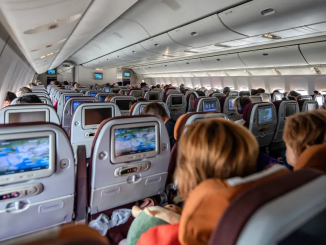
Leave a Reply